
閃亜鉛鉱の宝石:特性、意味、価値、用途
 閃亜鉛鉱は硫化亜鉛の宝石で、様々な色がありますが、一般的にはオレンジ、茶色、黄色といった秋の色合いです。閃亜鉛鉱は宝石ですか?はい!宝石以外の用途で使われることが多いですが、宝石品質の閃亜鉛鉱はダイヤモンドに匹敵する透明度と輝きを持つことがあります。
閃亜鉛鉱は硫化亜鉛の宝石で、様々な色がありますが、一般的にはオレンジ、茶色、黄色といった秋の色合いです。閃亜鉛鉱は宝石ですか?はい!宝石以外の用途で使われることが多いですが、宝石品質の閃亜鉛鉱はダイヤモンドに匹敵する透明度と輝きを持つことがあります。
閃亜鉛鉱は希少ですか、それとも一般的なものですか?鉱物としては非常に一般的で、実際、最も一般的な硫化鉱物の一つです。しかし、良質でファセット加工可能な閃亜鉛鉱は、宝石の中でも希少でエキゾチックな存在です。
この記事では、閃亜鉛鉱の鉱物特性や治癒特性から価値や産地まで、閃亜鉛鉱の宝石について知っておくべきすべての情報を紹介します。
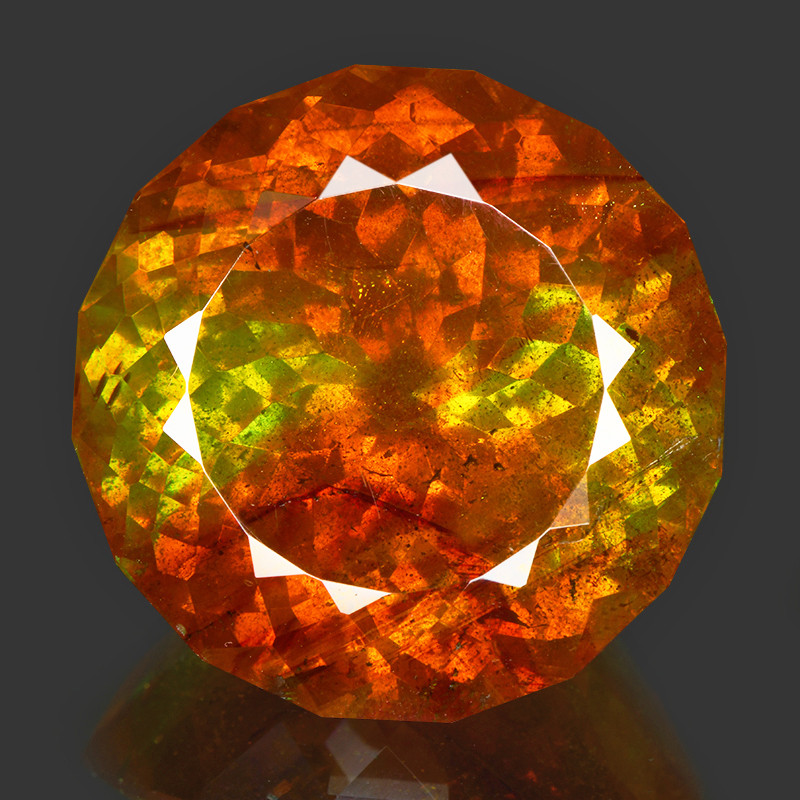
閃亜鉛鉱石について
閃亜鉛鉱(せん亜鉛こう)は、亜鉛の重要な供給源として広く知られています。実際、世界の亜鉛の約95%は閃亜鉛鉱から産出されています。
半貴石である閃亜鉛鉱は、その多彩な色彩と高い分散性で愛されています。分散とは光の反射の一種で、白色光が複数の色に分散し、多彩な輝きを生み出します。多くの宝石愛好家は、その高い分散性といえばダイヤモンドを思い浮かべますが、閃亜鉛鉱の分散性はダイヤモンドの3倍にもなります。
占星術では、閃亜鉛鉱は双子座の星座石です。赤い閃亜鉛鉱は、伝統的な7月の誕生石であるルビーの手頃な代替品にもなります。

閃亜鉛鉱の仕様と特徴
「閃亜鉛鉱」は、鉱物のグループ全体を指す場合もあれば、そのグループに含まれる一つの鉱物を指す場合もあります。では、閃亜鉛鉱は何でできているのでしょうか?その成分は様々です。
閃亜鉛鉱の主な組成は亜鉛、鉄、硫化物で、鉄含有量は通常25%未満ですが、40%に達することもあります。鉄含有量によって、閃亜鉛鉱の色、透明度、蛍光性、屈折率が変わります。
不純物は必ず存在し、多くの場合、カドミウム、水銀、マンガンが含まれます。ガリウム、インジウム、ゲルマニウムなどの不純物も見られることがあります。また、微量元素や鉱物が閃亜鉛鉱の色を決定することもあります。
閃亜鉛鉱の構造には双晶構造がよく見られます。閃亜鉛鉱の仮像は、方解石や方鉛鉱といった類似鉱物の結晶構造を持つこともあります。
閃亜鉛鉱は、六面体の完璧な劈開、光沢、そして条線によって見分けることができます。条線とは、鉱物の粉末を素焼きの磁器のような条線板で削った後の色を指します。
閃亜鉛鉱の条線は通常、白、赤褐色、または黄色で、硫黄のような匂いがします。閃亜鉛鉱の光沢は、透明度に応じて変化することがよくあります。透明な宝石はアダマンティン(金剛石)で、半透明または不透明な宝石は鈍い色から樹脂のような色をしています。
閃亜鉛鉱のすべての特性は以下の通りです。
鉱物ファミリー:閃亜鉛鉱グループ
組成:硫化亜鉛;(Zn、Fe)S
モース硬度: 3.5~4
色: 通常は茶色、黄色、黒の色合い。赤、灰青、緑、赤橙、紫、無色の場合もあります。
結晶構造:立方晶系/等軸晶系
光沢:鈍い、樹脂のような、または金剛石のような光沢
透明性:半透明から透明。鉄分が多いと不透明になる。
屈折率:2.37~2.50
密度:3.90~4.20
へき開:[011]の完全な十二面体(6つの平面)
骨折:不均一から貝殻状
条痕:茶褐色、淡黄色、白色、または赤褐色。条痕試験中に時折硫黄臭がする
発光: 多くの場合、明るいオレンジレッドから赤色の蛍光を発します。摩擦で光る摩擦発光の場合もあります。

閃亜鉛鉱の種類
閃亜鉛鉱には様々な種類があり、それぞれに異なる名称が付けられています。それぞれを詳しく見ていきましょう。
ブラックジャック:不透明で暗い色の石の愛称
クレオファネ:ニュージャージー州フランクリンの、強いオレンジと青の蛍光を発する透明、無色から薄緑色の品種
ゴールデンスファレライト:黄色からオレンジ色の品種
マルマタイト/クリストファイト:コロンビアのマルマト鉱山またはドイツのサン・クリストフ鉱山産の不透明な黒色品種
ルビー閃亜鉛鉱/ルビー亜鉛:茶色がかった赤、赤、またはオレンジ色の閃亜鉛鉱の商標名
ロジンジャック:黄色または琥珀色の品種。ロジンジンク、ロジンブレンデ、レジンジャックとも呼ばれる。
鉱物の特性はご存知でしょうが、閃亜鉛鉱の形而上学的特性とは何でしょうか?まずはスピリチュアルな意味から見ていきましょう。

閃亜鉛鉱の意味と歴史
閃亜鉛鉱は勇気、活力、そして輝きを象徴します。元素の面では、閃亜鉛鉱は火と土の両方の性質を持つ石です。
火と土の石である閃亜鉛鉱は、「地に足をつけ、頭は雲の上」という考えを体現しています。このクリスタルは、エネルギーと想像力を刺激すると同時に、地に足をつけ、燃え尽き症候群を防ぎます。この二面性とバランス感覚こそが、閃亜鉛鉱が双子座に最適な理由です。
ドイツの鉱物学者エルンスト・フリードリヒ・グロッカーは、1847年に閃亜鉛鉱を初めて公式に発見しました。グロッカーは、閃亜鉛鉱が方鉛鉱(貴重な鉛源)に似ているにもかかわらず、鉛を含んでいなかったことから、ギリシャ語の「sphaleros」 (「欺瞞的な」または「誤解を招く」)にちなんで名付けました。また、閃亜鉛鉱は他の多くの石と類似していたため、識別が困難でした。
グロッカーが登場する以前、この鉱物は「亜鉛鉱」や「閃亜鉛鉱」といった名前で呼ばれていました。ドイツの鉱物学者ゲオルギウス・アグリコラが1546年に「閃亜鉛鉱」という名称を選び、グロッカーが登場するまで鉱山労働者たちは主にこの名称を使っていました。
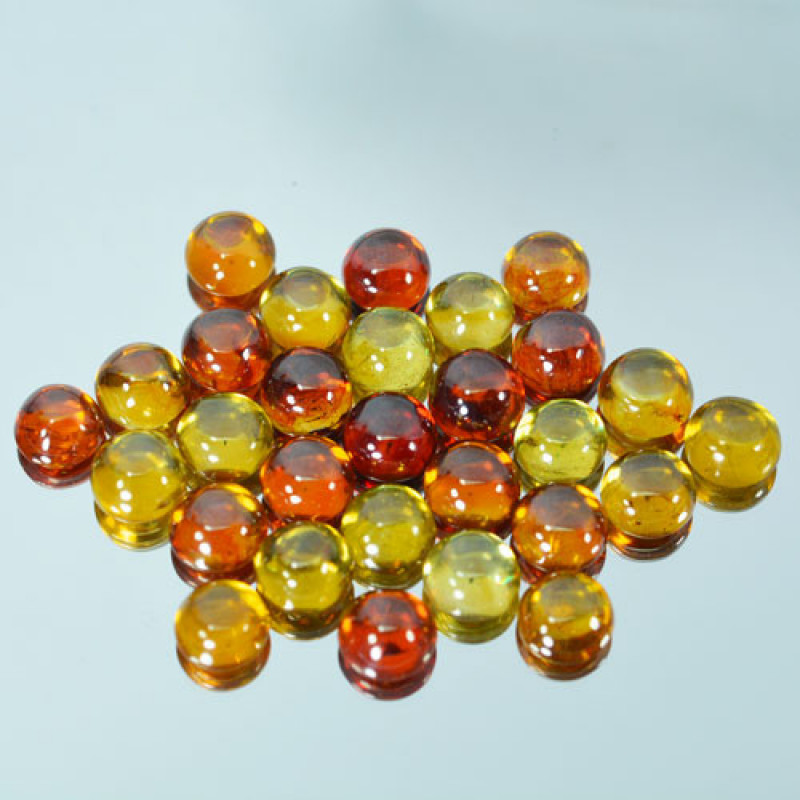
宝石以外の用途
閃亜鉛鉱の鉱石としての用途は、紀元7世紀にまで遡ります。中世の真鍮製品の分析によると、当時のイスラム教徒が閃亜鉛鉱を使って真鍮を製造していたことが分かっています。さらに、12世紀から13世紀の中国では、閃亜鉛鉱が真鍮を固める道具として使われていた可能性を示唆する証拠もいくつかあります。
現在、閃亜鉛鉱は日常生活でどのように使われているのでしょうか?
閃亜鉛鉱から得られる亜鉛は、真鍮や青銅などの金属の製造や、鋼鉄や鉄(亜鉛メッキ金属)の腐食防止コーティングに不可欠です。閃亜鉛鉱は、送電塔(送電線を支える)、自動車、バッテリーにも使用されています。
亜鉛は医学的にも重要です。この元素は、免疫システムがウイルスと戦うのを助け、太陽の有害な紫外線から肌を守るのに役立ちます。
亜鉛以外にも、閃亜鉛鉱によく含まれる他の元素不純物は技術に役立っています。例えば、携帯電話の画面に使われるインジウムや、携帯電話のバッテリー、回路、振動部品、LEDディスプレイに使われるゲルマニウムなどが挙げられます。
工業用途については説明しましたが、閃亜鉛鉱は治療においてどのような用途に使われるのでしょうか?
閃亜鉛鉱の治癒特性
宝石の色と波動は、それらを強力なヒーリングクリスタルにすることができます。多様な色彩を持つ閃亜鉛鉱は、豊富な形而上学的特性を有しています。
多くの閃亜鉛鉱は茶色で、他の茶色の宝石と同様に、安全、安らぎ、そして母なる地球との繋がりを促します。金色の閃亜鉛鉱のような黄色の宝石は、喜びと集中力をもたらします。
閃亜鉛鉱は紫色になることがありますか?稀ですが、あります。紫色の閃亜鉛鉱にはどのような効果があるのでしょうか?他の紫色の宝石と同様に、これらの結晶は知恵と精神的な認識を高めます。
閃亜鉛鉱を身体的、感情的、そしてチャクラのヒーリングにどのように使用するかを見てみましょう。
身体の治癒
閃亜鉛鉱の身体的な効果としては、免疫系と神経系の働きを助けることが挙げられます。閃亜鉛鉱は、特に激しい運動後のエネルギーと筋力の増強によく使用されます。
クリスタルヒーラーは閃亜鉛鉱が眼疾患を治癒し、血中酸素濃度のバランスを整え、免疫システムを改善すると信じています。
感情的な癒し
感情面では、閃亜鉛鉱は地に足をつけ、エネルギーのバランスを整えてくれます。自信を高め、創造性を刺激する石と言われています。
閃亜鉛鉱の結晶は、自分自身をより明確に表現し、変化に適応し、困難な状況からより簡単に回復するのに役立つかもしれません。
チャクラヒーリング
チャクラヒーリングは、特定のチャクラ(またはエネルギーセンター)に関連する症状を特定する古代の実践です。そして、チャクラストーンなどを用いてチャクラのバランスを整え、症状を解消します。
閃亜鉛鉱はどのチャクラですか?閃亜鉛鉱のチャクラヒーリングは、安定性とつながりの基本的なニーズを司るルートチャクラに最適です。
喪失感、妄想、孤立感は、ルートチャクラがブロックされている兆候です。閃亜鉛鉱を使うことでチャクラを開き、強さ、安全、そして守られていると感じることができます。
閃亜鉛鉱の宝石特性
宝石の専門家は、宝石特性と呼ばれる要素に基づいて石の客観的な価値を判断します。閃亜鉛鉱の価値は、カット、色、透明度、そしてカラット重量によって決まります。
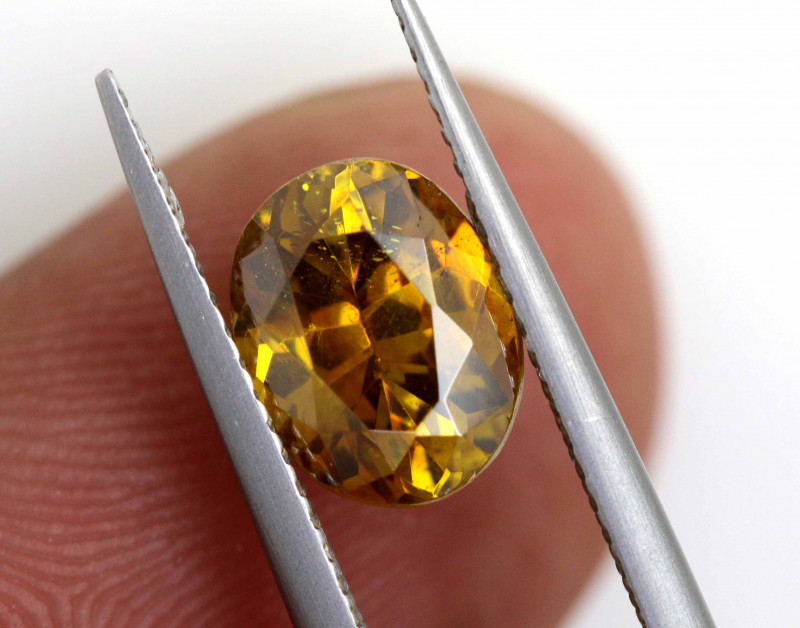
色
最も一般的な閃亜鉛鉱の色は、赤褐色、暗褐色、黒、黄色、オレンジです。緑、赤、紫、灰青、白の閃亜鉛鉱は希少です。
一般的に、オレンジ色または赤色の閃亜鉛鉱は最も高値で取引され、茶色、緑色、黄緑色のものは価値が低くなります。淡い色合いの石は分散性が高く、より高い価値を生み出します。
黄色の色合いは、カルシウム、銅、水銀、セリウム、ゲルマニウムなどの不純物によって引き起こされることが多いです。スズ、モリブデン、銀は通常、赤色の閃亜鉛鉱を作り出し、鉄とコバルトは緑色の閃亜鉛鉱を作り出します。
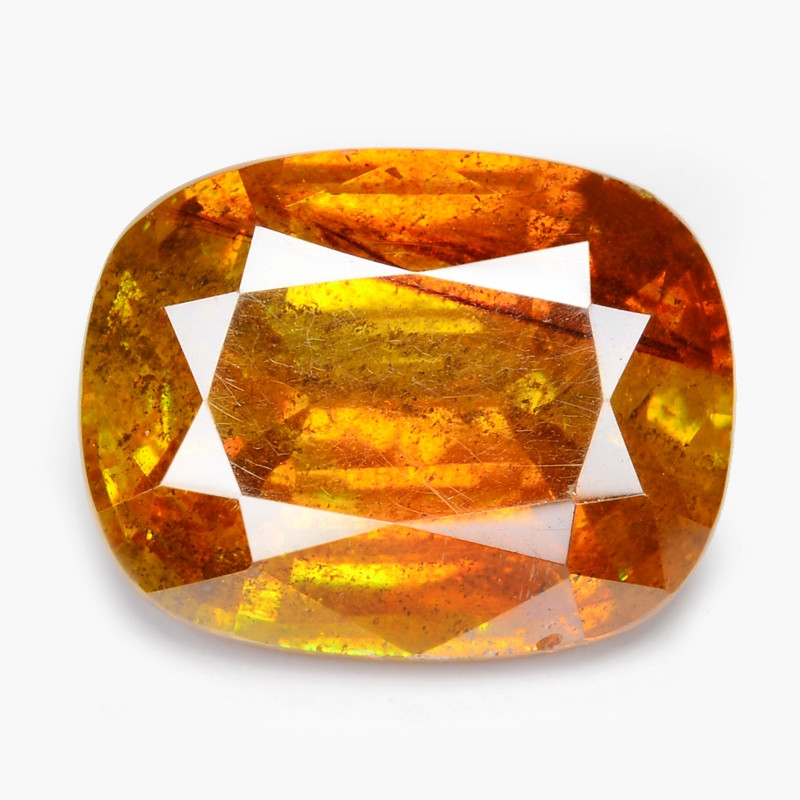
カット
閃亜鉛鉱の硬度は非常に低く、脆さと完璧な劈開性により、カットが難しい宝石です。そのため、未加工のコレクター向け標本としてよく見られます。
これを試みる専門の宝石職人は、通常、トリリオン、ラウンド、クッションなど、輝きを表現するためにファセットカットを選択します。
閃亜鉛鉱は、同じ組成でありながら結晶構造が異なる鉱物であるウルツ鉱と混ざり合うことがあります。この二つの石は重なり合ってシャーレンブレンド(閃亜鉛鉱)となり、 カボションカットされることもあります。

明瞭さ
クラリティは宝石の内包物の大きさを測る尺度です。閃亜鉛鉱はカラーストーンのクラリティスケールでタイプIIIに分類され、肉眼で内包物の有無をほぼ確実に確認できます。内包物がないように見えるのは、小さな閃亜鉛鉱だけです。
閃亜鉛鉱の特徴的な分散は、内包物の少ない標本ではより顕著になるため、透明度の高い希少石はより高い値段がつきます。
カラット重量
3カラット以上の閃亜鉛鉱は、特にオレンジ色と赤色のものは非常に高く評価されます。小さな閃亜鉛鉱は、どんな色でもそれほど価値がありません。
閃亜鉛鉱の原石は巨大なものもあります。例えば、スペインでは100カラットにもなる巨大な原石が産出されます。メキシコでは、ファセット加工によって50カラットにもなる良質な閃亜鉛鉱も産出されます。
合成繊維
合成スファレライトは、科学研究や装飾品、ジュエリーなどの宝石用途でよく使用されます。天然スファレライトは脆いため、合成スファレライトはスファレライトジュエリーの選択肢としてより多様性を提供します。
天然の閃亜鉛鉱を見ると、それはどのように形成されるのでしょうか?
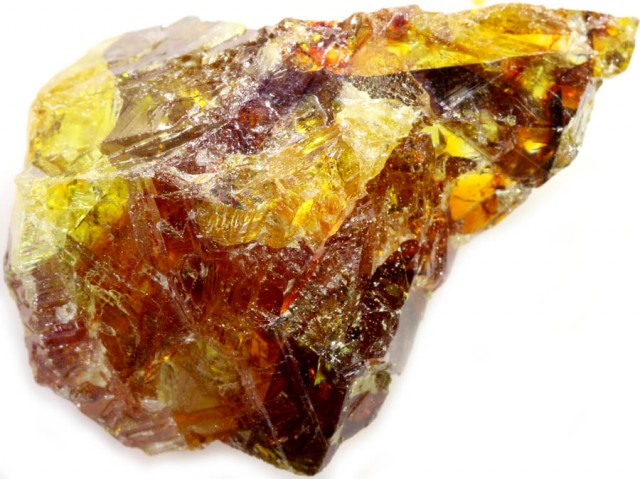
閃亜鉛鉱の形成と起源
閃亜鉛鉱は様々なプロセスを経て形成されます。閃亜鉛鉱が見つかる最も一般的な鉱床の種類は以下のとおりです。
堆積性亜鉛鉛(SedEx)鉱床、
火山性塊状硫化物(VHMS)鉱床、および
炭酸塩岩に含まれる鉛亜鉛鉱床。
SedEx鉱床とVHMS鉱床は海底にあります。SedEx鉱床は海底の噴出孔で形成され、VHMS鉱床は海底の火山岩から形成されます。
時には、熱い地下水やマグマが炭酸塩岩を変化させ、亜鉛を豊富に含む流体をもたらして閃亜鉛鉱が形成されることもあります。
溶融した溶液は岩石の空洞に入り込んだり、炭酸塩岩(母岩)の一部と置き換わったりして、その後、硬化して閃亜鉛鉱となります。炭酸塩岩の一部を置き換わるこのプロセスは、鉛亜鉛鉱床、あるいは「ミシシッピ・バレー型」(MVT)鉱床でよく見られます。
環境や条件によって閃亜鉛鉱の組成は変化します。例えば、温度が高いと鉄含有量が高くなります(鉱床に鉄が含まれている場合)。
形成された過程に関係なく、閃亜鉛鉱はどこで見つかるのでしょうか?
採掘場所
閃亜鉛鉱は数十カ国で産出されています。中でもスペインはおそらく最もよく知られた産地で、透明で赤オレンジからトフィーブラウンの高品質な閃亜鉛鉱の結晶を採掘しています。
現在、宝石品質の閃亜鉛鉱を生産するその他の主要産地は以下のとおりです。
オーストラリア
ボリビア
カナダ
中国
チェコ共和国
コンゴ民主共和国
イングランド
インド
アイルランド
カザフスタン
メキシコ
ペルー
ルーマニア
スコットランド
スウェーデン
アメリカ合衆国(主にミシシッピ川流域)
次に、閃亜鉛鉱の価値はいくらでしょうか?

閃亜鉛鉱の価格と価値
まず最初に、閃亜鉛鉱は高価ですか?閃亜鉛鉱の宝石は高価になることがあります。ただし、品質によって価格は異なります。一般的に、閃亜鉛鉱の宝石価格は1カラットあたり20ドルから200ドルの範囲です。
最も価値の高い石は、透明で、比較的内包物が少なく、3カラット以上、そして中程度の赤みがかったオレンジ色です。これらの高品質の宝石は1カラットあたり最大200ドルの価格で取引されることもありますが、通常は1カラットあたり70ドルから100ドル程度です。
しかし、閃亜鉛鉱のファセット加工には高度な技術が必要となるため、ファセット加工された閃亜鉛鉱は原石やファセット加工されていないものよりも価格が高くなります。1カラットで濃い赤褐色のファセット加工された閃亜鉛鉱は、1カラットあたり平均約65ドルです。ミディアムイエローまたはオレンジイエローの1カラットの宝石は、1カラットあたり90ドルから100ドルです。
閃亜鉛鉱カボションの卸売価格は1カラットあたり15ドルから50ドルです。最も手頃な価格なのは、1カラットあたり0.40ドルから1.50ドルの閃亜鉛鉱原石です。
閃亜鉛鉱の値段が高いことを考えると、宝石が長持ちするかどうかを確かめたいと思うでしょう。
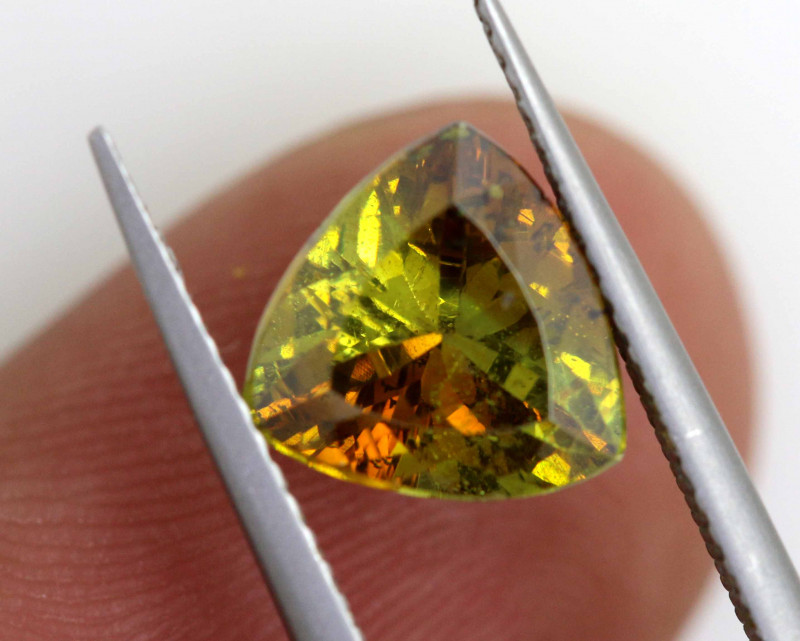
閃亜鉛鉱のケアとメンテナンス
宝石のお手入れは、美しい状態を保ち、できるだけ長くお使いいただくために重要です。スファレライトの硬度は3.5~4と低く、家庭内の埃(硬度7)でも傷がつく可能性があります。そのため、スファレライトのリングよりも、ペンダントやブローチをおすすめします。
閃亜鉛鉱を安全に洗浄するには、柔らかい歯ブラシ、中性洗剤、ぬるま湯を使用してください。石に残った石鹸カスをすべて洗い流し、自然乾燥させてください。
損傷を防ぐために、閃亜鉛鉱を高温や家庭用化学薬品(洗剤、ヘアスプレー、香水など)にさらさないでください。
激しい運動をする前に、閃亜鉛鉱のジュエリーを外してください。宝石は柔らかい布に包み、布張りの容器に入れて他の宝石と分けて保管してください。
閃亜鉛鉱の宝石に魅了されましたか?
閃亜鉛鉱は、工業用途、クリスタルヒーリング、そしてもちろん美しいジュエリーなど、様々な用途で価値の高い宝石です。宝石コレクターや愛好家なら、この色鮮やかで輝く石をコレクションに加えたいはずです。
Gemstone Encyclopedia検索
最新記事
鮮やかな赤い模様と文化的意義で珍重される希少な宝石、チキンブラッドストーンの歴史、特性、価値、お手入れのヒントをご紹介します。
8th Dec 2025
ゲイラス石は、乾燥しやすいため白濁しやすい希少鉱物で、主に工業用途で使用されています。この完全ガイドで、ゲイラス石の歴史、特性、用途、そして特徴をご覧ください。
7th Dec 2025
チオライトは、氷晶石に似た、無色から白色の希少鉱物です。宝石としては非常に希少で、限られた産地からしか産出されません。チオライトの用途、歴史、価格、特徴についてはこちらをご覧ください。
5th Dec 2025
記事のカテゴリ
How To's is where you will find helpful articles from gem Rock Auctions on how to cut gemstones, select gemstones and buy gemstones.
9記事数

